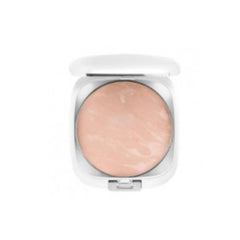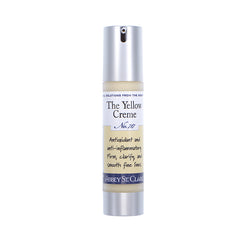How to Lighten Age Spots Naturally

If you have dark spots that have gradually appeared on your face, hands, and other parts of your body, you are not alone. They are called “age” spots. We go along for years with a balanced skin tone, and one day discover that time has caught up with us in the form of discolorations on our skin. Hands are a prime focus for these spots and are a telling indication of age.
Take heart though, as you can reduce these dark spots and keep them at bay with natural techniques and ingredients. Abbey St. Clare provides products that will lighten age spots and hyperpigmentation naturally and brighten skin.
What Are Age Spots?
Regardless of your ethnic background or skin color, eventually most of us will develop brown marks on our skin called age spots. Dark spots occur when the top surface layer of skin expands with more pigment. These marks generally appear on exposed areas, such as the face, back, neck, chest, shoulders, and hands.
Also called lentigines, lentigos, or liver spots, an age spot may look like a large freckle, and multiple spots may be clustered together. Some people have a hereditary predisposition to them. Even though age spots are more common in older people, they can develop as early as childhood. While not physiologically a danger, it is easy to be self-conscious about these darkened areas of skin. Treating age spots not only promotes an improved appearance, but also enhances self-esteem.
The main culprit of skin discoloration is sun exposure. You are not likely to have age spots on areas of your skin where the sun does not shine. When skin is exposed to the sun, it causes an increase in the production of melanocytes, the skin cells that increase melanin in the skin. When increased melanin is evenly spread throughout the skin, you have a tan. When the melanin production is inconsistent, age spots form. Age spots are a symptom of sun damage, so they are found on areas with the most UVA/UVB exposure, namely your hands, face, neckline, arms, and legs.
It’s important to note that age spots are not cancerous, and they don’t lead to cancer. If you find spots on sun-exposed skin that are scaly, red elevations, this is probably actinic keratoses. Be sure to have them evaluated by a dermatologist.
The first line of defense against age spots and aging skin is smart sun behavior. This includes avoiding the sun altogether or keeping exposure to a minimum, as well as the daily use of a quality sunscreen with an SPF of 20 or higher. That said, unless you become a hermit, sun exposure is unavoidable (in fact we do need some sunlight every day), and sunspots are inevitable for most of us. There is no permanent “cure,” but with routine care, you can minimize their appearance.
Key Ingredients for Natural Skin Brightening
Luckily, you don’t need laser treatments and chemical peels to treat age spots. There are plenty of ways to lighten dark spots naturally with good-for-you ingredients. Paired with a strong sunscreen routine, these ingredients can provide a powerful defense against dark spots. Some of the most effective ingredients for fading discoloration, evening out skin tone, and brightening the complexion include:
- Vitamin C—A powerful antioxidant, vitamin C repairs UV damage and reduces the number of sunburned cells. Topical application is best to target signs of aging on the skin.
- Peptides—Made up of amino acids, peptides are the building blocks of skin cells. They penetrate the top layer of the skin and encourage collagen production, diminishing wrinkles and age spots.
- Hyaluronic acid—This ingredient diminishes discoloration, lightens and tones age spots, and makes skin feel hydrated and supple.
- Niacinamide—Acting as a skin whitener, niacinamide increases the production of ceramides and reduces hyperpigmentation.
- Vitamin E—Full of antioxidants, vitamin E helps diminish the appearance of age spots and discoloration when applied topically.
- Avocado oil—High in sterolins, avocado oil helps fade dark spots and heal sun damage. It also boosts collagen production and is a wonderful skin softener.
- Ginseng—An ingredient that is rich in vitamins, minerals, and phytonutrients, ginseng inhibits the production of melanin, protecting the skin from the type of pigmentation caused by UV radiation or sun damage.
- Botanical squalane—A potent antioxidant derived from olives, this ingredient diminishes age spots and improves uneven skin pigmentation.
- Resveratrol—A natural skin whitening agent, resveratrol detoxifies the skin and reduces the appearance of uneven skin tone.
Our Fade Skin Brightener is a botanical-based formula to temporarily lighten and brighten skin tone. It contains all of the above ingredients plus 10 of the most effective botanical skin-brightening extracts to lighten the appearance of hyperpigmentation, sun spots, brown spots, and freckles. Each ingredient was purposefully selected for better skin health, improved tone, and coloration. FADE can be used anywhere you wish to lighten hyperpigmentation, including your hands and neckline.
Exfoliation products are some of the most effective for balancing skin tone and supporting better skin health. Our Green Tea Scruff should be used at least once a week for smooth, glowing skin. It reduces the appearance of sun damage, removes dulling surface cells, helps balance overall skin tone, and shrinks the appearance of pores. Vitamin C Complex Crème and Vitamin C Tonic both contain high levels of skin lightening vitamin C in various forms, along with additional skin lightening additives.
Other Natural Ways to Lighten Age Spots
There are many home remedies you can use to lighten hyperpigmentation naturally. In fact, you probably have these ingredients in your kitchen right now.
- Lemon juice contains citric acid, a natural bleaching agent. It also has ascorbic acid (vitamin C), which helps to lighten age spots. Unfortunately, it can take a long time to see results.
- Apple cider vinegar contains natural alpha hydroxy acids, which help lighten sun and age spots. It is often used to soothe sunburn.
- High in lactic acid, milk may help lighten skin discolorations and exfoliate surface cells. Cleopatra’s famous milk bath treatment for creamy skin is a well-known example of this home remedy.
- Used in many skin care formulas, aloe vera helps improve hyperpigmentation and fade darker spots by encouraging the skin to regenerate new skin cells.
For more insight on natural skin brightening techniques and products, visit Abbey St. Clare. We have a variety of natural skin care products that can, with consistent use, help diminish sun damage and age spots for a healthy, radiant complexion.
Leave a comment
Comments will be approved before showing up.
Also in Abbey St Clare Blog

The Wheel is Turning. Abbey St. Clare has Closed.
Hello Friends,
The wheel is turning. Transitions are on the horizon. It is with regret that after almost twenty years, Abbey St. Clare is winding down as retirement and a relocation take place in the near future. We will continue taking orders through September 15.

Fix These 5 Hair-Washing Mistakes For Healthier Hair
Is your hair feeling brittle? Scalp dry? Locks not as lustrous as you want them to be? It’s possible you’re damaging your hair with five hair-washing mistakes.
If you follow these guidelines, you will see significant improvement in your hair and scalp health.

Pamper Your Skin and Elevate Your Mood With Essential Oils
Have you ever caught a whiff of cinnamon and felt a boost in your mood instantly? Do you feel calmer and more at ease when using lavender lotion before bed? If you said yes, it’s not just a figment of your imagination!
Ask anybody who uses essential oils regularly, and they’ll probably agree: these natural botanicals can have powerful, positive effects on your mood and overall wellness.



